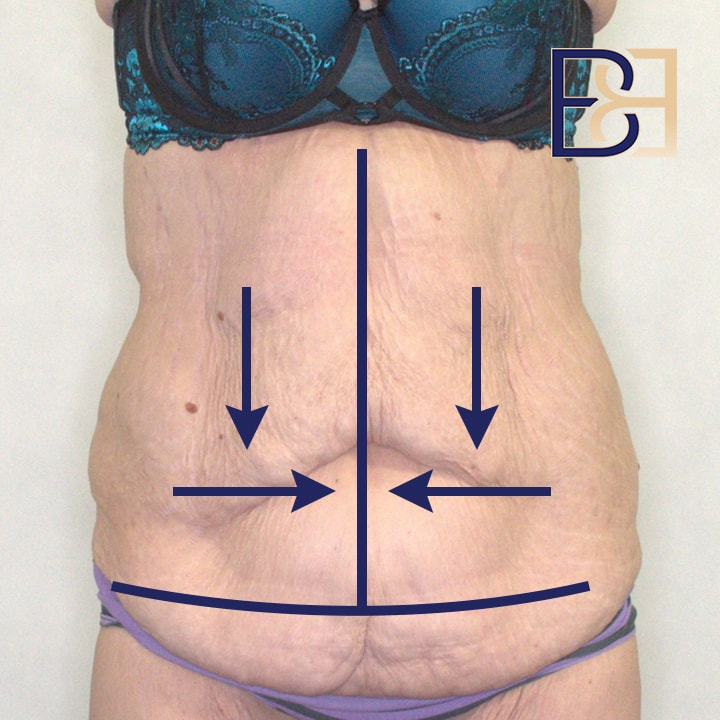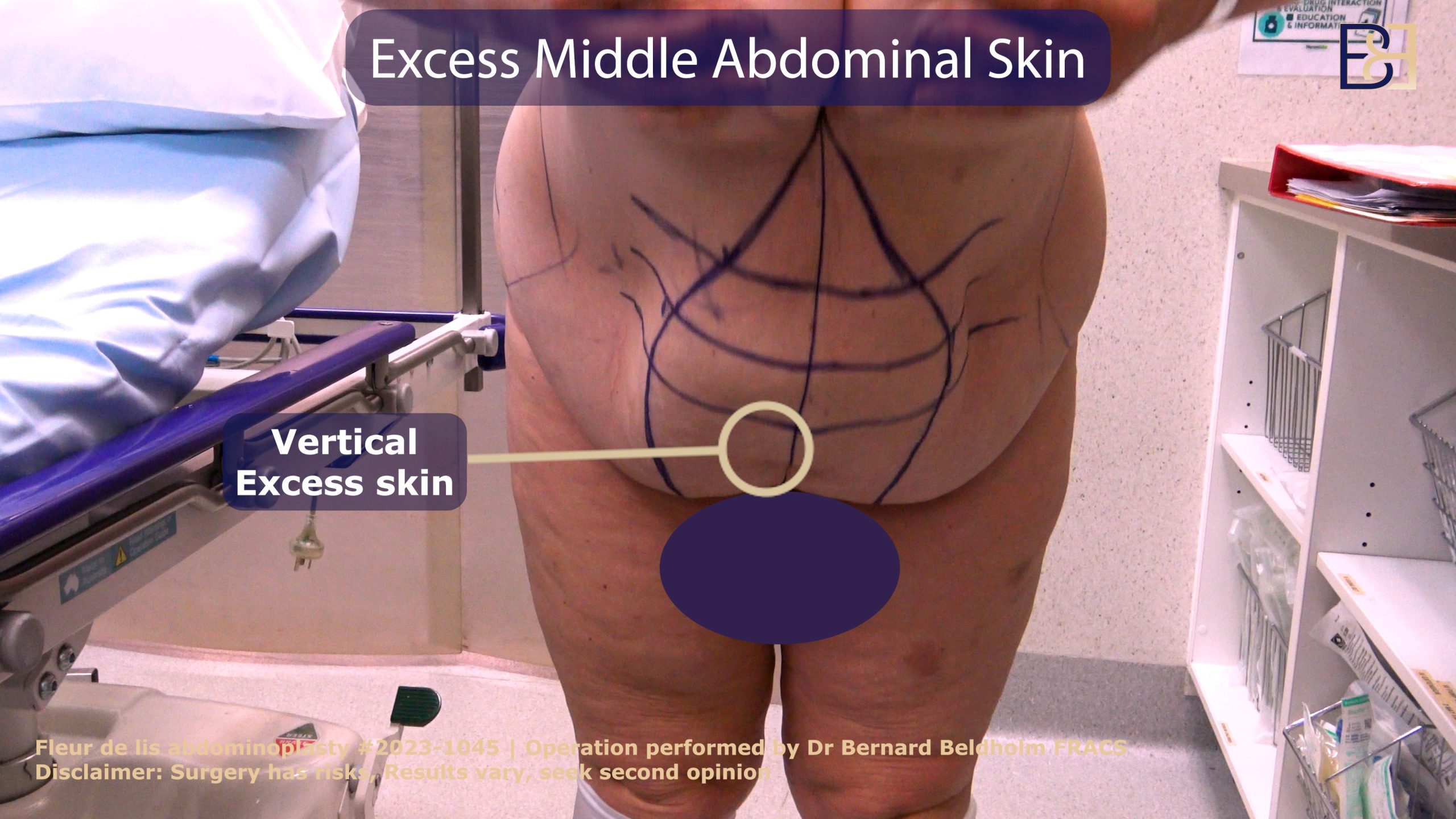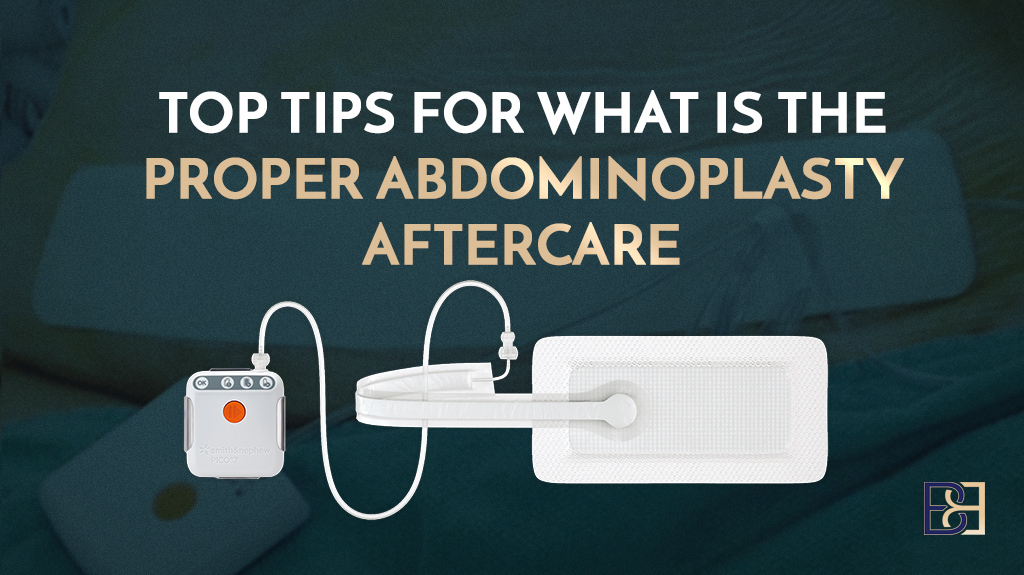Can I get an abdominoplasty with a vertical incision instead of horizontal? Yes, it is a possible option for certain patients. Typically, a vertical incision is used when there is significant excess skin that a horizontal incision alone can’t **. In this article, we’ll discuss why a vertical incision might be chosen, its benefits, and any associated risks. This will help you better understand if this approach is right for your specific needs.
Key Takeaways
- Vertical incision abdominoplasty, like the Fleur-de-Lis technique, is great for those with significant upper abdominal skin laxity, especially after major weight loss.
- This method offers ** body contouring and may result in less noticeable scars, but it comes with a longer recovery period and visible vertical scars.
- Choosing between vertical and horizontal incisions depends on individual body type and aesthetic goals, so consulting with a qualified surgeon is crucial.
Understanding Vertical Incision in Abdominoplasty

Disclaimer: Operation performed by Dr Bernard Beldholm. Adult content, surgery has risks; individual results vary, seek 2nd opinion. Please see the full disclaimer.
Book your appointment online now
When it comes to tummy tuck (Abdominoplasty) surgery, most people picture a horizontal incision running from hip to hip. However, there’s another technique that might be more suitable for some patients: the vertical incision. This approach is particularly common in procedures like the Fleur-de-Lis abdominoplasty, which is designed to ** both the upper and lower abdomen by removing excess skin and fat and repairing the abdominal muscles, often involving a tummy tuck incision.
The vertical incision in a Fleur-de-Lis procedure is tailored to each patient, depending on the amount of excess skin present. This incision intersects with a horizontal one, resulting in an inverted T-shaped scar that allows for the removal of more skin than a traditional tummy tuck. This can be particularly beneficial for those who have undergone massive weight loss and have significant skin laxity.

Unlike the classic abdominoplasty, which involves just a horizontal incision, the addition of a vertical component can help lower the position of the horizontal scar and reduce closure tension.
When is a Vertical Incision Necessary?

A vertical incision is often necessary for patients with a significant amount of excess skin in the horizontal direction. This type of incision helps to remove excess skin that is difficult to ** with traditional horizontal techniques. Substantial weight loss may result in vertical skin excess that a standard horizontal scar can’t adequately **, making a vertical incision more suitable.
Fleur-de-Lis abdominoplasty, which incorporates a vertical incision, is specifically designed for patients with significant skin laxity due to major weight loss. Before opting for this plastic surgery surgical procedure, it’s essential to consult with a qualified surgeon to assess whether it aligns with your body type and aesthetic goals.

Benefits of Vertical Incision Abdominoplasty

One of the most compelling benefits of vertical incision abdominoplasty is the ** body contouring it offers. This technique provides a more tightened overall appearance, especially beneficial for individuals with significant skin laxity. ** both vertical and horizontal skin excess can lead to dramatic aesthetic results.

Patients who undergo vertical abdominoplasty often experience ** waistline definition due to the dual-direction skin tightening. This is particularly advantageous for individuals who have lost a significant amount of weight and have loose skin in various abdominal areas. The procedure effectively reduces excess skin and fat, providing a tighter and more contoured midsection.
Drawbacks of Vertical Incisions

Disclaimer: Operation performed by Dr Bernard Beldholm. Adult content, surgery has risks; individual results vary, seek 2nd opinion. Please see the full disclaimer.
While there are many benefits to a vertical incision, it’s important to consider the potential drawbacks. One of the main disadvantages is the visible vertical scar that remains after the procedure. For some, this scar may be more noticeable and less desirable compared to a horizontal scar that can be hidden under underwear or swimwear.
Additionally, vertical incisions may lead to a longer recovery period due to the nature of the surgical technique and associated complications. Potential risks such as wound infection and prolonged healing times should be discussed with a healthcare provider to fully understand what to expect.
Download our short guide: “11 Important abdominoplasty techniques that you need to know about”
Comparing Vertical and Horizontal Incisions
Comparing vertical and horizontal incisions helps clarify why one might be chosen over the other. The addition of a vertical component in an abdominoplasty can help lower the position of the horizontal scar and reduce closure tension. This can result in better scar placement and overall aesthetic outcomes.
The mini inverted T-scar technique, which incorporates both a vertical and horizontal scar, has shown to provide favorable healing outcomes and higher patient ** compared to conventional abdominoplasty. Clinical studies indicate that the vertical component of the scar heals very well, suggesting that patients can expect positive results.
Surgical Techniques for Vertical Incision Abdominoplasty

See the step by step operation guide: “Step-by-Step Operation Guide: VASER Assisted Fleur De Lis Abdominoplasty Surgery After 30 kg of Weight Loss”
The surgical procedure for vertical incision abdominoplasty typically requires the patient to be under general anesthesia and can take several hours to complete. The surgeon starts by making an inverted V-shaped vertical incision. This follows the markings that were made prior to the surgery. An incision is made around the umbilicus to free the belly button before removing excess skin.

A surgeon’s assistant stabilizes adjacent tissues during the incision in Fleur-de-Lis abdominoplasty to prevent movement. The V-Loc barbed suture is used for muscle repair, reducing time under general anesthesia and ensuring no knots under the skin. Closure is done in layers using absorbable sutures for the deeper layer and integrating ARTISS tissue glue to reduce complications.
The belly button is sutured into the vertical extent of the incision to maintain its **. Additionally, liposuction can be used to ** fat removal and contouring during an abdominoplasty. This comprehensive approach ensures a smoother and more aesthetically pleasing outcome.
Recovery Process After Vertical Incision Abdominoplasty

Recovery after vertical incision abdominoplasty involves several stages. Initially, wound breakdown is frequently reported among patients, often necessitating further interventions. Early mobilization is encouraged post-surgery to reduce the risk of blood clots and promote healing. Compression garments are utilized to support the midsection and prevent swelling.
Patients should rest in an inclined position for the first two weeks to minimize swelling. Hydration and a fiber-rich diet are crucial to prevent constipation during recovery. Avoid standing for long periods and heavy lifting during the initial weeks to prevent strain on the healing tissues.
Driving should be avoided for about three weeks due to pain and reduced concentration. Walking is encouraged after two weeks to promote blood circulation and healing. Recovery times can vary based on individual factors such as age, health, and the specifics of the surgery.
Is Vertical Incision Right for You?
Determining if a small vertical incision is right for you involves evaluating your individual circumstances and goals. Candidates for this type of surgery often have upper abdominal skin laxity that standard procedures may not adequately **. Proper patient selection and preoperative counseling are essential to minimize negative outcomes related to vertical incisions.
There is a trend of increasing patient ** associated with techniques incorporating vertical components. Discussing your specific needs and expectations with a qualified surgeon will help you make an informed decision about whether cosmetic surgery with a vertical incision aligns with your aesthetic goals.
Dr Beldholm’s Final Thoughts

As a surgeon with extensive experience in abdominoplasty, I believe vertical incision abdominoplasty offers a compelling solution for patients with significant skin laxity in the upper abdomen, especially following major weight loss. This procedure provides superior body contouring and ** waistline definition, making it an attractive option for many individuals seeking dramatic aesthetic results.
However, it’s crucial to weigh these benefits against the potential drawbacks, such as the visible vertical scar and the longer recovery period. These factors should be carefully considered when deciding whether this approach is right for you.
Ultimately, the decision to undergo vertical incision abdominoplasty should be based on a thorough evaluation of your individual needs and goals. Consulting with a qualified surgeon is essential to ensure that you make an informed choice that aligns with your aesthetic aspirations. By understanding the intricacies of this procedure, you can ** move forward in your journey to achieve the body contour you desire.
Frequently Asked Questions
When is a vertical incision necessary in abdominoplasty?
A vertical incision is needed if you have a lot of skin laxity in the upper abdomen that a horizontal cut can’t handle. It’s all about giving your tummy the best contour possible!
What are the benefits of a vertical incision in tummy tuck surgery?
A vertical incision in tummy tuck surgery can really amp up your body contour, giving you a sharper waistline and more dramatic results, especially if you’ve lost a lot of weight. It’s all about achieving that ** aesthetic you’re after!
What are the potential drawbacks of a vertical incision?
A vertical incision can leave a noticeable scar and might mean a longer recovery time. So if you’re considering it, keep those factors in mind!
How does the recovery process differ for a vertical incision compared to a horizontal incision?
Recovery from a vertical incision can be longer and demands more careful post-op care than a horizontal incision, mainly because of the surgery’s extensive nature. It’s key to follow your doctor’s advice to avoid complications!
Is a vertical incision right for everyone considering a tummy tuck?
A vertical incision isn’t right for everyone; it’s mainly for those with significant upper abdominal skin issues. It’s super important to chat with a qualified surgeon to find the best approach for you.




